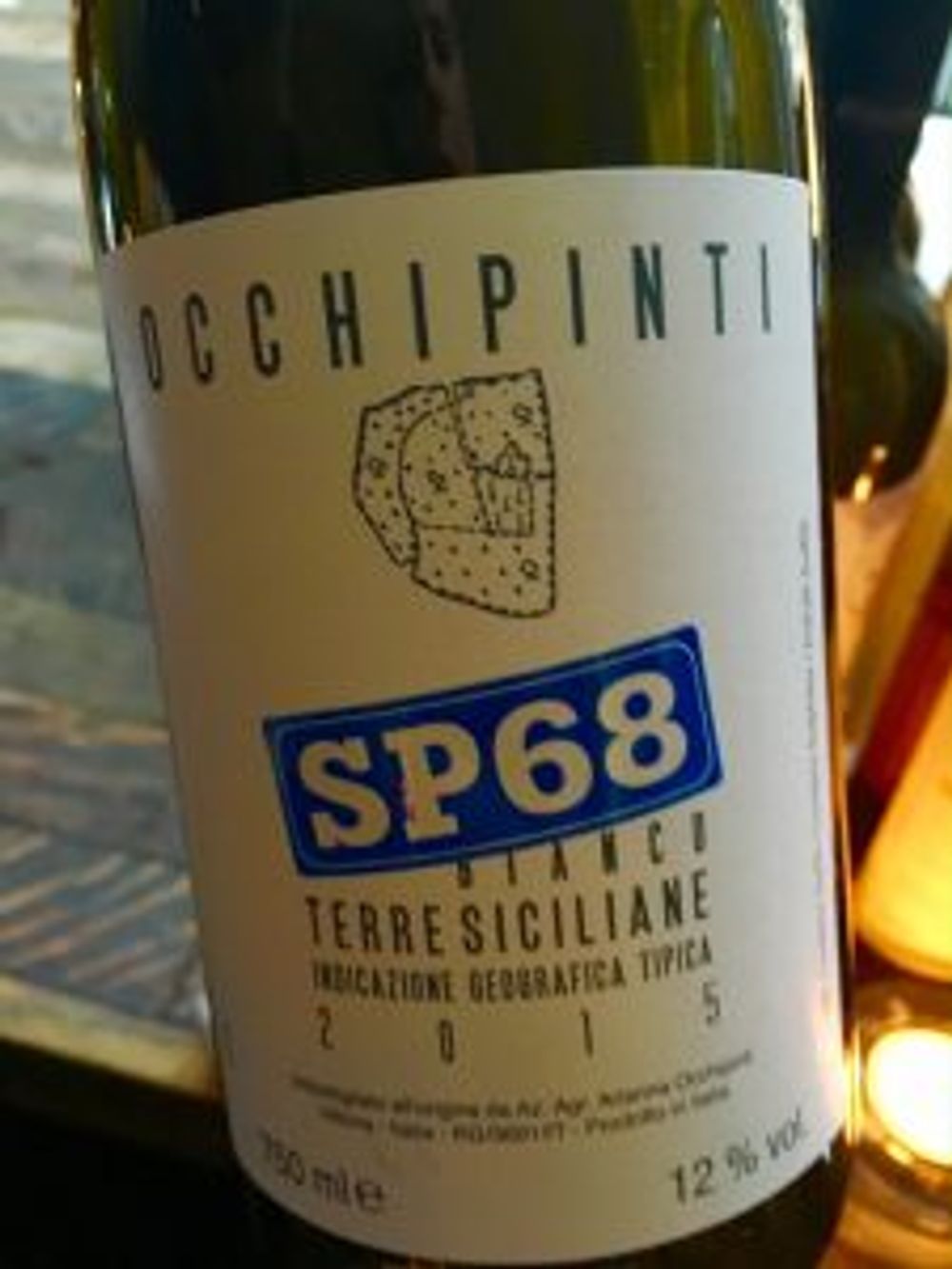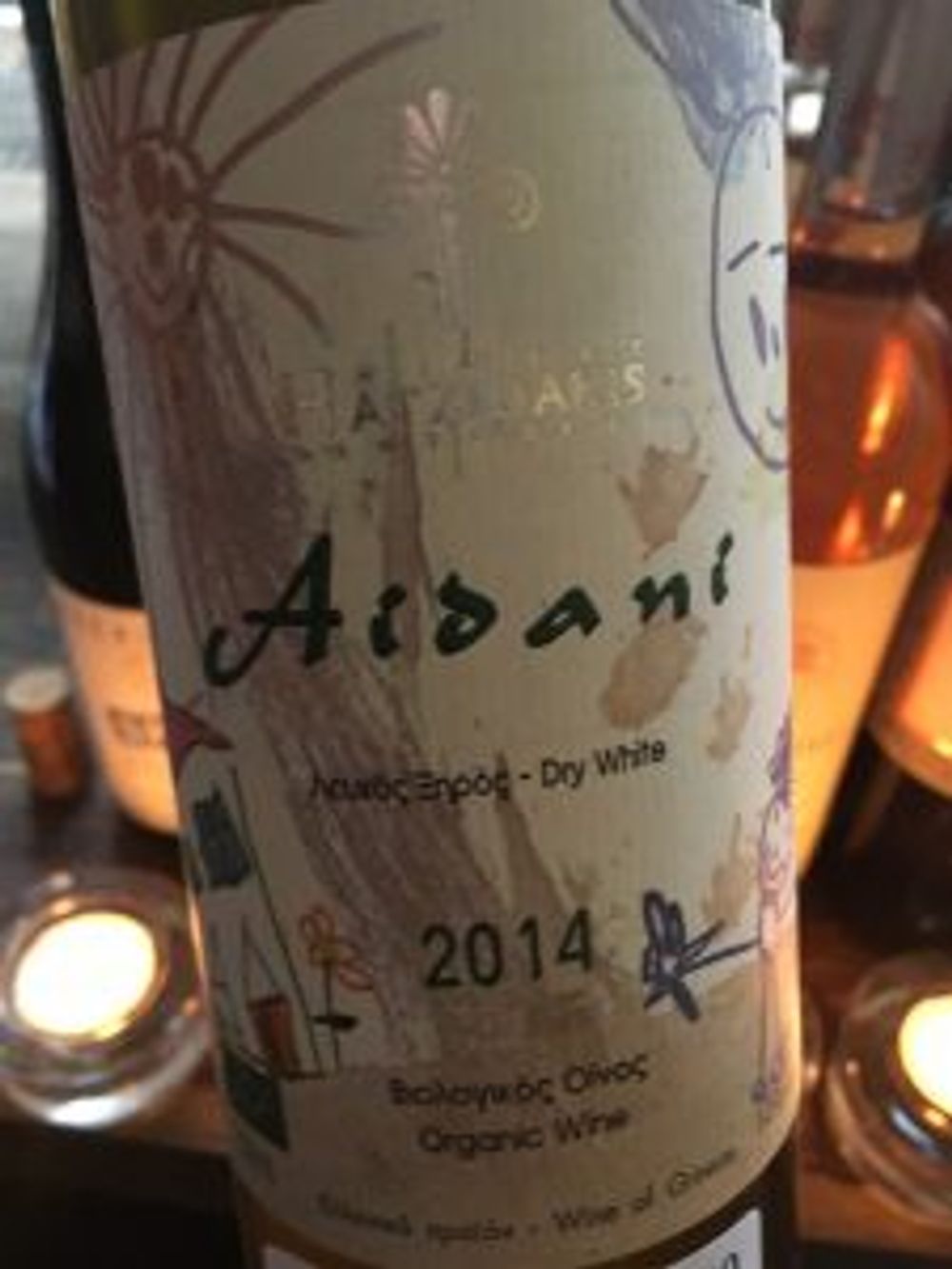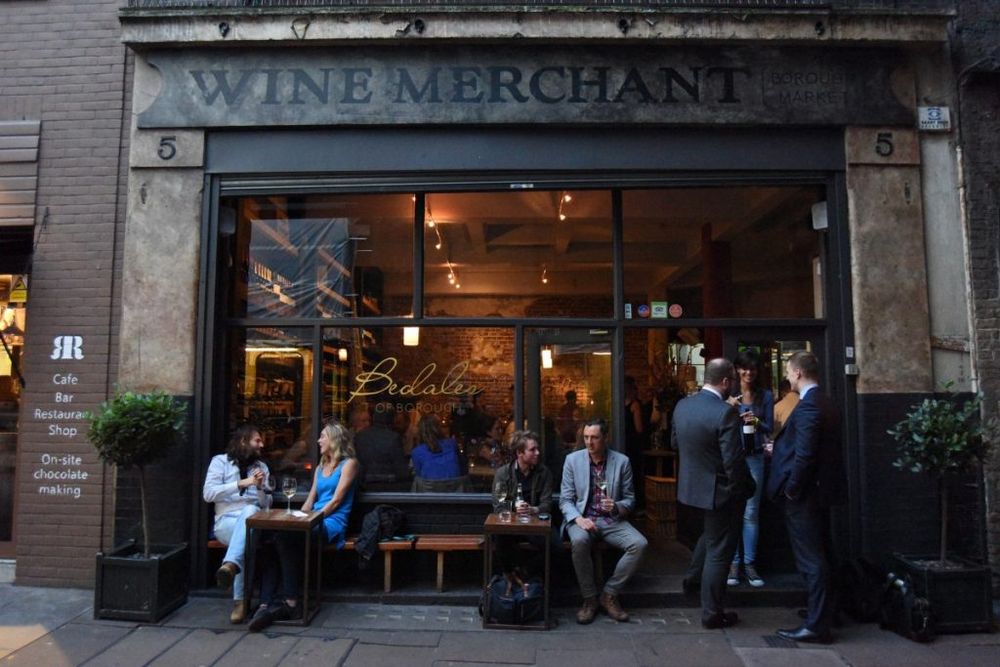Orange and amphora wines were just some of the delights on offer at Hands Off – a natural wine workshop run by sommelier Giuseppe de Cesare.
Last Wednesday I went to a natural wine workshop at Bedales in London’s Borough Market, hosted by excellent sommelier Giuseppe de Cesare.

With a focus on wine from smaller producers, this little wine merchant and wine bar has a great list. One can find a lot of interesting wines here by the glass, which might be rare and difficult to find on the UK market. For example, wine brought directly from a teeny Slovenian producer straight to you.
Furthermore, with focus on low mark-up here, you won’t get ripped off, which isn’t unfortunately the case in a lot of other destinations in central London. Two great starting points.
I went for a wine workshop on a Wednesday night. Cesare is a young, enthusiastic sommelier and we chatted before the tasting about our intrigue for wines on the natural scale. He had picked an excellent line-up of wines, imported by Caves de Pyrene.
The wines:
Occhipinti SP68 Bianco 2015, Sicily, Italy

Grapes: Albanello and Zibbibo
Slightly honeyed aromas with rich white flower and herbal notes. Rich, slightly spicy palate with orange peel and zesty notes. Very well balanced acidity, pleasingly fresh. A lovely grip on the finish.
Made by Arianna Occhipinti, who made her first ever vintage when she was just 24. The wines are very natural; no fertilisers, a tillage in early summer, only a tiny amount of sulphur, natural yeasts and no filtration.
Hatzidakis 2014, Santorini, Greece

Grape: Aidani
From volcanic soils and high altitude, we really get a lot of mineral notes here. A subtle smokiness that shines through on the nose is arguably a direct translation of the terroir into the wine. Lemon peel and pineapple notes, with white pepper and smokiness on the palate.
From the indigenous ancient grape variety of Santorini, Aidani, this is a unique wine, with a slightly fatter palate than the previous one.
Organic. Natural yeasts. 12 hour skin contact, with no filtering.
Montenidoli Canaiuolo Toscana IGT Rosato 2014, Tuscany, Italy

Grape: Canaiuolo
Fresh, round, serious rosé. Floral on the nose, with red berries on the palate; strawberries, raspberries and sour cherries. Long finish. A nice mineral complexity means it makes a very good food wine.
The wine has a very interesting story. Winemakers, Elisabetta Fagiuoli and Sergio, came to Chianti Colli Senesi in 1965. They found the ruins of an Etruscan vineyard that had been cultivated by the Romans. Using on-site clippings and seeds, they reinvigorated the vineyard through biodynamic farming and began growing classic varietals of Sangiovese and San Gimignano. Canaiuolo, a red varietal, is occasionally blended into Chianti, but much less so these days. At Montenidoli, they celebrate centuries-old unusual and quirky grapes. They still use a nearly extinct technique, governo alla Toscana, in which dried bunches of late harvest grapes are put into a finished grape must in order to restart the fermentation. (thanks to sipfinewine.com for the inf0).
Bressan, Verduzzo Friulano 2010, Italy

Grape: Verduzzo
It’s no secret I love orange wine, and this one is a brilliant example. Gentle tangy, spicy nose, with strong cinnamon pulling through. On the palate, clove notes are evident, with orange peel and candied fruit. It really is the epitome of a complex wine.
Currently ninth generation, this is a family that knows how to make wine. The estate has around 45ha of old vines, with majority indigenous grape varieties. Very low yields, due to the soils composed of a calcareous mineral base, with high presence of iron sesquioxides.
The grapes are individually picked, destemmed and brought to must, rest and undergo cold maceration for the first 48 hours, after which they are racked and soft pressed. The must is cold decanted (elimination of decanted part). Only the ‘flower’ of the must is transferred, then fermented at 19-21°C for 20-25 days, and then transferred into 225l barriques. With own yeasts, the wine is fermented sur lie for a minimum of eight months. The wine is then moved into stainless steel tanks for further ageing. The wine is bottled at summer’s end and placed in large chests containing 500 bottles each, then stored in a temperature controlled warehouse for additional ageing. This methodology is conducive to the long term ageing of white wine.
Venus Universal Dido Tinto 2013, Montsant, Spain

Grapes: Grenache, Syrah, Merlot and Cabernet Sauvignon
An amphora wine (yay!). Really smooth. Bright red fruits – cherries, strawberries and some ripe blackcurrants. A lovely blend. It’s very light and expressive of its terroir, in a similar way to other light reds, such as Gamay vinfied in cement tanks.
The wine comes from decomposed granite soil plots in Falset. It is aged in clay pots to maintain its extraordinary freshness. The sandy gravel structure and graceful texture changes temperature rapidly depending on the climate. Heated during the day and cooled at night, allowing the grapes a good, long maturation. 60% of the wine is aged for 16 months in different wood barrels from 300l up to 4000l, little clay amphorae and the remaining 40% in concrete tank to emphasise the fruit.
Tajinaste Tinto 2014, Tenerife, Spain

Grape: Listan Negro
I was excited to see this on the list. I went to Tenerife two years ago, and went wine tasting in the North of the island. Tenerife is unique when it comes to wine; it was one of the few places in the world that was unaffected by phylloxera. It’s really cool, and the wines seriously stand out. Volcanic soils.
The notes of the wine took me straight back. Listan negro is unique and memorable. Pure black pepper on the nose, an intensely spiced scent. Black, dense fruits on the palate but with serious freshness. Very strong fruit. It’s a big red in terms of its flavour profile but it’s also very fresh. A true pioneer of a much fresher, easier-drinking and terroir-expressive wine. One can only hope other Spanish regions follow in its footsteps.
Tajinaste is a small family-owned winery located in the Valle de la Orotava. It is on the north side of Tenerife and therefore heavily influenced by the vientos alisios, or trade winds, which help moderate the climate of the islands. Agustín García and his family farm a total of six hectares (15 acres). Tajinaste’s vineyards are situated between 300 and 500 metres above sea level. The oldest stocks of the varieties Listán Negro and Listán Blanco were planted around 1914. (thanks to bowlerwine.com for the info).
Incidentally, if you are interested about the wines of Tenerife read my blog here.
As well as the wines, we had charcuterie and cheese selections, which all paired deliciously with the versatile range of wines.

Follow Christina Rasmussen’s journey through wine on Twitter and through her blog
Giuseppe de Cesare also writes a blog called Food Travel Culture.
Bedales holds wine workshops fortnightly for £30.










































